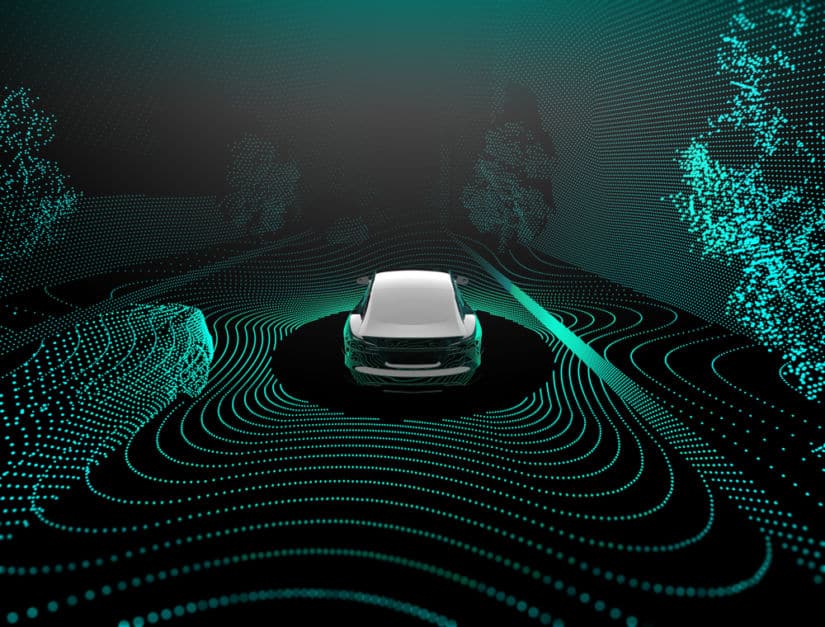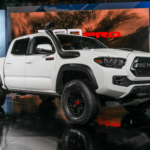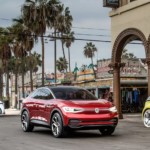If you’ve been in the market for a new vehicle, you can’t visit a single car brand’s webpage without reading something about their autonomous driving technology. While these innovations have yet to be perfected, drivers can still see flashes of these technologies included in today’s vehicles. Specifically, many of these functions are advertised as safety features, as they ultimately play a significant role in helping drivers to avoid accidents altogether.
Predictably, Porsche has gotten into the game, as the brand has continued to develop their own unique autonomous-driving technology. To help explain the brand’s vision and development, Vice President of the Executive Board (as well as a member of the Finance and IT Executive Board) Lutz Meschke recently sat down with the brand’s newsroom to discuss specifics. We pulled out some of the notable quotes below, although the entire article is certainly worth reading. When you’re finished looking through his remarks, you’ll have a better understanding of how this hot, “current auto news” has made its way to one of the top luxury brands in the entire industry…
With autonomous driving getting more and more popular, will there ever be a day when Porsche won’t include a steering wheel?
“A Porsche will always be a car that you will want and be able to drive yourself. Nevertheless, there are of course aspects of autonomous driving that are interesting for us: Traffic jam assistants or automated parking, for example. It’s attractive to be able to use the drive into the office during rush hour for my first virtual meeting. Or imagine you have dinner plans and are running late – and you can let the car park itself automatically. That’s really useful. In traffic jams and when it comes to parking, the functions of automated driving will soon be “must haves”.”
Parking and traffic improvements were mentioned among the benefits of autonomous driving technology. How else will this innovation improve the driving experience of Porsche’s vehicles?
“There are different stages on the way to fully autonomous driving. Depending on the series, we will offer more or fewer functions. Regarding topics such as autonomous driving or connectivity, we have to present solutions that fit perfectly to our customers’ requirements.”
When will we begin seeing these technologies in Porsche’s vehicles, and how is the brand already utilizing the unique innovations?
“InnoDrive is an example of how we applicate the technical possibilities in the typical Porsche way. That is a step towards semi-autonomous driving. In order to get an overview of the traffic, the system essentially uses the radar sensors and the lane departure assistant for the lateral and longitudinal guidance in combination with highly precise 3D route data from the navigational system. A traffic assistance and parking assistance plus will be included in the Cayenne next year – with a certain delay depending on the market, of course. We will make a real leap with the Mission E at the end of the decade. The principle is this: There are hundreds of thousands of things that you can do with technology. For us, it is important to narrow down the options to the key areas for Porsche and concentrate on these.”
What unorthodox ways is the brand looking to utilize the autonomous technology?
“We will increasingly offer functions “on demand”. That means that the customer can buy new functions at any time if needed – including long after buying the car and, where applicable, only temporarily. Be it as a one-off for a fee, as a flat rate or as a subscription.
“For example, it would be possible to combine modules from the area of autonomous driving individually. Imagine that you could use a software update to download a few more PS over-the-air at short notice if you want to head to the racetrack on the weekend – or dynamic headlights if you are headed for a long night drive.”
If utilizing autonomous driving technology is truly a focus of the brand, how does the company ultimately allocate resources without compromising development on other automotive aspects?
“We now have to invest heavily in development. These new services won’t just fall from the sky. Up to now, we have mostly invested in conventional vehicle development, now we are significantly strengthening the development of services. But what is also true is that we want to and we must make money with these new services. In order to do so, we predominantly need concepts for resource-poor growth in which we don’t always have to own all resources ourselves.
“[A]nother idea is the Mark-Webber-function, as we call it – named after the race driver and our brand ambassador. With this function, the vehicle could drive autonomously on a racetrack like the Nürnburgring – just like Webber would drive. The car drives an ideal course and demonstrates perfect brakes in the curves, where to best shift and where to accelerate. First, the software saves the exact course Mark Webber drives on a racetrack. These data are used by the autonomous vehicle to drive the course identically. Afterwards, the customer can reclaim the steering wheel and let the car show him the ideal course, thus training and improving his skills as a driver via direct feedback from the car. This is technically possible already. Of course, the driver can improve over time and learn new things.”
Is the brand confident that the ultimate popularity of autonomous-driving-technology will justify the vast amount of resources that Porsche has already dedicated to the endeavor?
“Driving yourself will hopefully remain the most important thing at Porsche for a very long time. The Porsche sports car will be one of the last automobiles with a steering wheel. But autonomous driving will dramatically change the efficiency of using vehicles. We, therefore, have to assume that we will have to create a potential for growth alongside the vehicle in the era of autonomous driving. That’s why it is our medium-term goal to generate a two-digit percentage of our business with digital services.”



